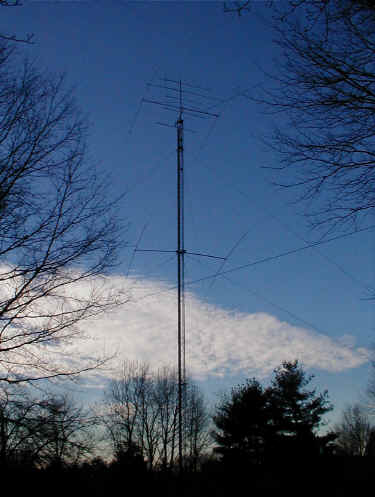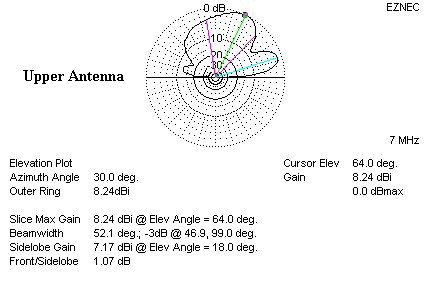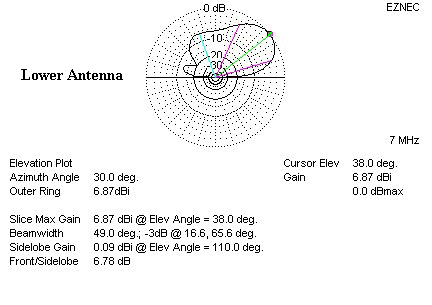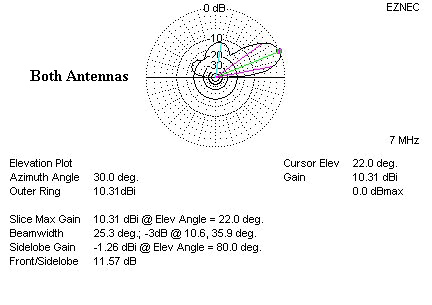
40 Meter Stack
Tower #2 has a "shorty-forty" stack of two Cushcraft 40-2CD antennas. The top antenna is at 105 feet (32 meters) and the lower antenna is at 62 feet (19 meters). The lower antenna is mounted on a Tic Ringrotor, and the antennas are phased using an Array Solutions stackmatch.
 Surpisingly,
the shorty-forties have held up well in the severe thunderstorms, hurricaines,
and gale force winds we have experienced since I put up my towers.
Surpisingly,
the shorty-forties have held up well in the severe thunderstorms, hurricaines,
and gale force winds we have experienced since I put up my towers.
When I modeled the stack, I was suprised at the results. My upper antenna is a little lower than it should be for this band. The lower antenna is about right.
The model showed that the upper antenna did indeed have a high-angle lobe, suffering from it's relatively low height.
So I began to question if the stack would help at all. I thought I might be wasting my money, and considered using the lower ring rotor for a WARC beam instead.
Checking the model with both antennas stacked, I saw that the stack seemed to pull that high-angle lobe down out of the sky, and put it into the desired target angles, adding to the overall gain. So it looks like a stack can "correct" an antenna that is too low also. My observations so far have confirmed this, the stack is almost always better than the upper antenna by itself.
Here are the elevation plots for the 40 meter stack.


